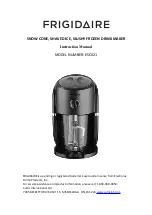
Removing Protective
Film
Akril is supplied with protective film on both sides:
Recycled Sticker:Akril is also supplied with a recycled
sticker number 7, which should be left on the Akril for its
recycled life after use.
Painted Side: has a plastic film design for protection of
the painted surface. Remove this film when all machining
operations are complete and the panel is ready to be
adhered to the wall/surface.
Exposed Side: has a clear plastic film designed for
protection against scratches.
Remove the film completely at the very last stage by
gently peeling down the sheet surface – never peel at right
angles to the sheet as this may pull the sheet away from
the installed wall/ surface.
Never attempt to cut the protective films with a knife as
this may scratch the surface.
Finishing the edge after cutting
If the Akril edge is to be left exposed, it can be easily
finished to a polished glass-like quality. A good finish left
from the machining process will take considerably less
time to finish.
Always peel back the protective film 25mm from the edge
while polishing. Remove any sanding dust between grades
and polishing compounds immediately.
HAND FINISHING
1. Use a 400-grit paper to remove any cutter marks from
the machined edge and then progress to a 600-grit.
2. Chamfer any burrs or marks from the corners.
3. Using a soft, clean cloth and a suitable polishing
compound (see page ), hand rub the edge to a polished
finish.
FLAME POLISHING
A well-machined edge can be flame polished using a
Hydrogen/ Oxygen mix.
Contact an Acrylic fabricator for this service. An
experienced operator can leave an excellent finish.
Technical Support
It is not practical to describe every possible application for
Akril in this document.
For Technical support please contact Akril on
1800 464 728.
If the installer is required to fit any extra utilities to the
Akril be sure to follow the steps in this document where
machining is needed.
This document is a guideline for installing Akril and will
not wear any liability for waterproofing which should be
installed to the current Australian Standard.
For technical help please contact Akril on
1800 464 728
.
























